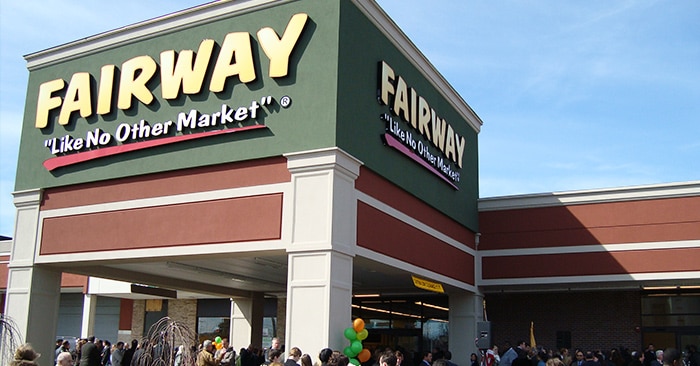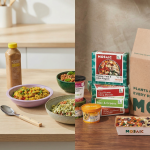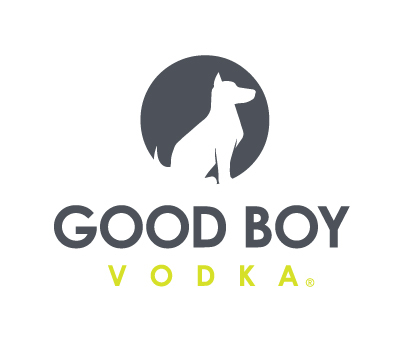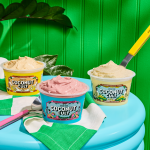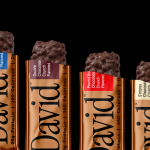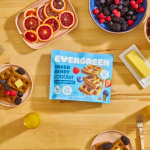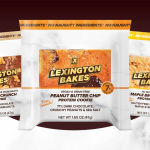How Specialty Can Still Help Grow Brands

Customers might love natural and specialty retailers, but lately it looks like their creditors don’t.
In the past month, three long-time natural/specialty retailers declared bankruptcies. Colorado-based natural food chain Lucky’s Market announced in a Facebook post it will close 32 of its 39 stores after retailer Kroger divested its ownership stake in December, having since found buyers for 24 locations. Additionally, New York-based grocery chain Fairway announced plans to sell up to five of its 14 stores and its distribution center for approximately $70 million. Earlier this month, North Carolina-based natural food retailer Earth Fare announced plans to close after failed attempts at improving its model and offerings in recent years.
Meanwhile, big box retailers increasingly feature emerging brands, and e-commerce and direct-to-consumer are gaining prominence in brands’ strategies. That leaves the role of natural/specialty — while unique — under fire. Each of these retailers offered a particular take on a similar ethos around local products, customer experience and affordability, propositions that attract a loyal shopper base — one reliable thread as the landscape further evolves, and one that food and beverage entrepreneurs have long considered a key link in their go-to-market strategies.
Take EVO Hemp, which first launched its bars at Lucky’s Market nearly a decade ago. Ari Sherman, the brand’s CEO, lamented the store’s closing in a LinkedIn post.
“Lucky’s took chances on new brands and new trends and became one of the first nationwide retailers to carry CBD products,” Sherman wrote. “It’s hard to watch so many great Lucky’s stores closing. But the culture that Lucky’s helped create will thrive and continue to push the grocery industry into a bright green future.”
But as the grocery business continues to shift, a clearer definition of what the channel offers may help new brands better understand where they fit in. As larger retailers increasingly offer to incubate such brands, smaller retailers have struggled to keep pace with their scale and reach. For example, since Walmart has grown its grocery division, increasing its support for early stage brands, grocery now generates half of the company’s total sales.
“It’s insane how much has changed in the last 10 to 20 years — it’s night and day,” David Browne, market research analyst and brand consultant for Mintel, told NOSH. “There are so many things conspiring against natural retailers not of a certain size or not funded enough.”
As the channel appears to face struggles, research firm The Hartman Group is seeking to further understand “all the variation within” it to help fuel its growth. Each of these recently bankrupt grocers, for example, offered a different value proposition, Tamara Barnett, VP of strategic insights for The Hartman Group told NOSH. But there are possibly subchannels to define, she noted.
“The lines between natural and specialty have blurred a bit,” she said. “It’s traditional to lump that channel together when really it’s not just a grab bag.”
Regardless of blur, the natural/specialty shopper remains a dedicated one — who wants to get offline and into the store. Browne writes the annual Key Drivers in Specialty report, which found that in 2018 brick-and-mortar generated $113.4 billion in natural/specialty sales — 45% of the channel’s total sales.
Lucky’s, for example, tried to bridge the gap: a 2016 investment from Kroger, a company that also supports early stage brands, seemed promising — but led to quick growth from 17 to 39 stores — perhaps too quick, Browne noted. Unlike mass retailers, natural/specialty retailers are less likely to evaluate and close (or further invest) in underperforming locations, which can be detrimental. And while many big grocers are betting on foodservice (along with alcohol and entertainment plays) to attract customers, these offerings are expensive to operate — beyond the scope of a small retail chain.
Still, natural/specialty retailers serve a distinct purpose — and that may keep them relevant. These bankruptcies represent only a small slice of all brick-and-mortar retail, Lee Holman, lead retail analyst at research firm IHL Group, told NOSH. Such closures are not exclusive to grocery — and can’t be attributed to one factor.
“Not every retailer makes wise decisions all the time,” Holman told NOSH. “Some are outstanding, [but there are] average performers and some that fall behind. The competition now is such that sins get exposed pretty quickly. In some cases they didn’t look at their business models in the past decade, ignored changes in demographics all around them, and borrowed and built beyond a level that was sustainable.”
The Offline Experience
While natural/specialty may be having a tough journey right now, the big bad internet isn’t the culprit. Online retail is a $3 billion sector, Browne explained, and represents just under 2% of natural/specialty market sales. While that means it isn’t yet as large of a threat as it seems, those low numbers may make it less likely that natural/specialty retailers will gamble on implementing online offerings themselves — which requires using third parties and no guaranteed return. And although e-commerce is growing quickly — it’s predicted to account for 25.7% of all retail by 2021 — 81% of all retail fulfillment will still be through stores, according to the IHL Group. If natural and specialty stores maintain their unique offerings, they’ll be able to handle that fulfillment.
Notably, natural/specialty retailers have an advantage: consumer experience. Mintel’s research has found that although premium consumers are eager to shop online, they tend to only buy a handful of staple items that way; in fact, most shop at four or five different outlets, on and offline, based on best prices and availability for their favorite brands. The natural/specialty shopper values quality standards, mission and sustainability behind both brands and retailers, Browne explained — all factors that give natural/specialty stores an edge over other channels.
That willingness to shop in-store is a win for brands too: while direct-to-consumer can be a helpful starting point at launch, brick-and-mortar can help brands establish deeper consumer connections as well as “a collaborative effort” with buyers to develop merchandising and promotional strategies, Browne noted. Additionally, in-store consumers are more likely to make impulse buys, he said.
“I think a lot of brands out there these days want to interact, rather than just through Amazon and direct-to-consumer because there’s an impersonalness to it,” he said. “Consumers [who are] really resistant to Amazon prefer the tangible aspects of going into these stores.”
Specialty and Small Brand Synergies
Just like brands, natural/specialty retailers need a clear value proposition to survive, Barnett told NOSH. In fact, the strategies — and pitfalls — of the channel offer similar takeaways for brands, she explained. By adapting shared strategies with clear missions in mind, brands and retailers can work well in tandem.
That brand and retailer unity is not always easy to achieve — either in brick-and-mortar or online. For example, direct-to-consumer company Brandless announced this week plans to shutter, with Barnett noting the platform lacked a distinct point-of-view over private-label store brands. On the other hand, online marketplace Thrive Market has an “anchor” — aligning its ethos with other “authentic CPG brands,” she explained. Brands can see direct-to-consumer as part of a strategy — along with natural/specialty — that offers a “great opportunity to really tap into cultivating personal relationships and connections with their consumer base,” Barnett said.
Still, specialty has a leg up: retailers can seek “unique opportunities” for brand partnerships, she said, especially if brands prioritize stores that align with their values. Meanwhile, she notes the lack of slotting fees in specialty as another plus. It never hurts to “incubate, iterate and start small,” honing in on one region and partner at a time — advice that can similarly apply to natural/specialty retailers themselves, she explained.
“Retail can feel hostile toward a brand — particularly younger, more emerging brands,” she said. “Brands [should] become empowered in terms of ways in which going to retail.
It’s crucial for brands to break through the noise via disruptive packaging and a unique (and tasty) product, and natural/specialty retail can further aid in telling their stories in a smaller setting. Another crucial benefit to natural/specialty retailers, Browne noted, is they can “cultivate trends as they’re beginning.”
Indeed, brands have historically relied upon smaller grocers, including food coops, taking chances on experimental products and ingredients, such as cannabidiol (CBD), Browne said.
These incubating retailers “have a trust established in communities [and] an educational component with knowledgeable staff — superior to mainstream retailers,” Browne explained. “That’s what’s going to potentially drive traffic to their stores.”
But to keep the channel robust will require hard work and willingness to evolve. Although multiple bankruptcies within a few weeks may appear dire, IHL Group found that in 2018, for each company that closed stores across food, drug, mass and convenience, 9.5 companies opened stores. Additionally, consumers still crave the “neighborhood feel” that natural/specialty retailers offer — a novel proposition in an increasingly automated society.
“There are a lot of obstacles, but I think they will continue to serve a role for a certain kind of consumer and certain kinds of brands that need a place to start,” Browne said. “It’s where most [natural/specialty] consumers are shopping and want to shop.”
